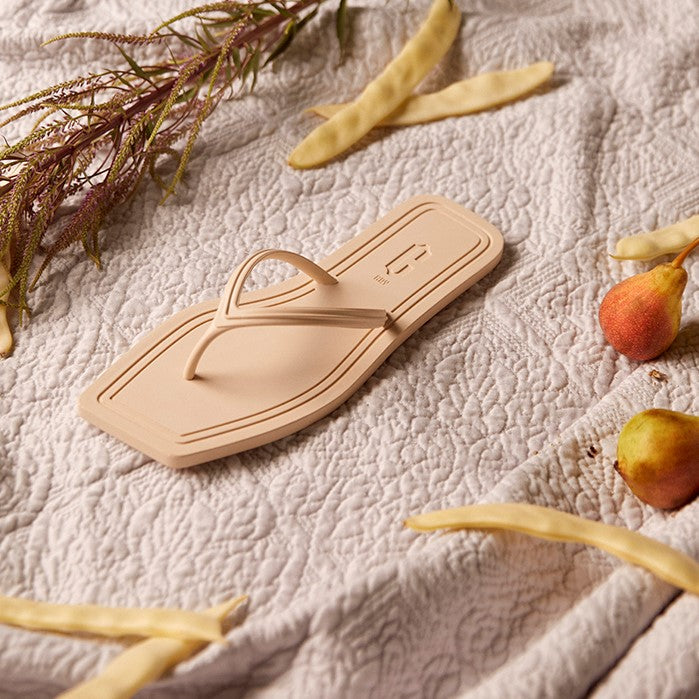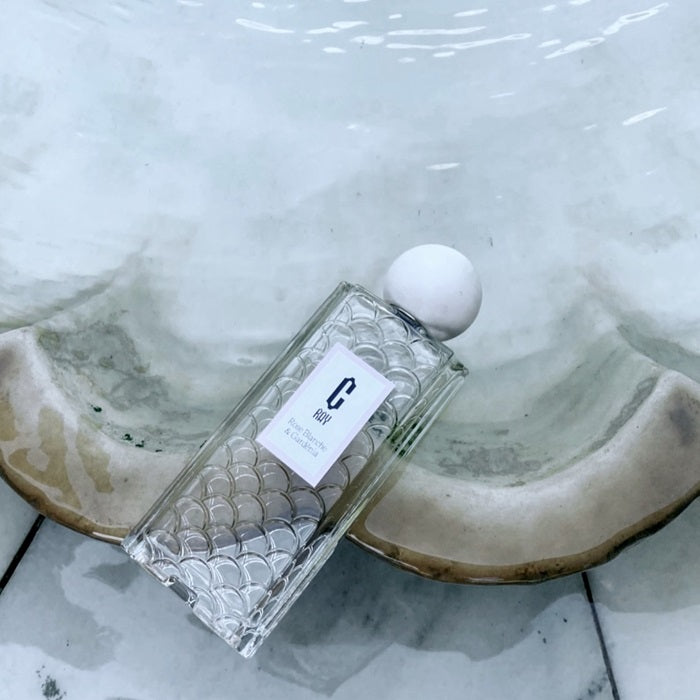

Natural-origin pigments
Fashion

How do we create natural-origin pigments?
Because your health and the preservation of the planet are two of our unwavering priorities, Carlotha Ray uses only natural pigments derived from vegetable and organic materials to color your favorite sandals. We want to share with you all the trade secrets of how we create our shoes, including the techniques and raw materials we use.
What organic materials do we use?
Whether a vivid or natural hue, the colors of Carlotha Ray shoes — both the rubber soles and fabric uppers — are designed with pigments derived from natural, organic materials. Their physico-chemical characteristics are perfectly suited to existing manufacturing techniques and provide the best solution to satisfy a growing demand for environmentally friendly practices and renewable raw materials.
Our materials include:
medicinal herbs, flowers, vegetal matter such, as such as olives and crushed olive waste, artichokes, peppers and pomegranates, almond and walnut husks, soil, charcoal, rice hulls, eggshells...
Where do these raw materials come from?
Our manufacturing processes are entirely sustainable and our selection of natural pigments is no exception to that rule. The raw materials used for production come from farmed plant dyes (from chamomile, dyer's broom, dyer's madder, reseda, etc.) harvested in forests (ivy, bramble, field horsetail, etc.) and from retrieved waste from agricultural production (olive, crushed olive waste, artichokes, peppers, pomegranates, mint, almond husks, walnut husks, etc.). Recycled eggshells and rice hull waste were also used in the production of our pigments.
Like our entire footwear production, all of the certified organic plants and charcoal we use are grown and processed in the Marche region of Italy.


How are they transformed?
The plants are harvested, dried and crushed or processed with aqueous extractions for ready-to-use concentrated dyes.
Did you know that the Mediterranean pomegranate, prized for its vitamin-rich juice, also produces magnificent pigments? Superb shades of yellow-gold and tones of green are obtained for dyeing textiles and leather goods by squeezing the fruit’s rind, rendering a dye that is directly produced from agricultural waste.
For example, natural brown colors are obtained from the husk or rind of walnuts. After harvesting the fruit, the bark is soaked and dried before being crushed. As the bark dries, its original white color turns dark brown and releases coloring agents called "juglone." This vegetal process has been used for centuries to dye wool and tint white wood fiber.
Examples of dyes produced with natural raw materials:
To produce our red and yellow we use soil. For our green soles we use algae as a coloring agent. For our topaz soles we use the waste from processed rice hulls, the first layer on a grain of rice. We produce our indigo blue and black with charcoal-production waste. Our white is made partially with eggshell waste.
To learn more about these processes, please read the editorial on our dedicated ecological and eco-responsible approach.
More articles
We take you behind the scenes of the production of the Limoges porcelain tumbler.
Top notes, heart notes, base notes... we explain it all!
Do you know the difference between upcycling and recycling?
Six must-try addresses, tested and approved by our designer.
Carlotha Ray uses only natural pigments derived from vegetable and organic materials.
Would you like to design your own accords?
Our designer shares her style tips for wearing the collection’s flagship model.








